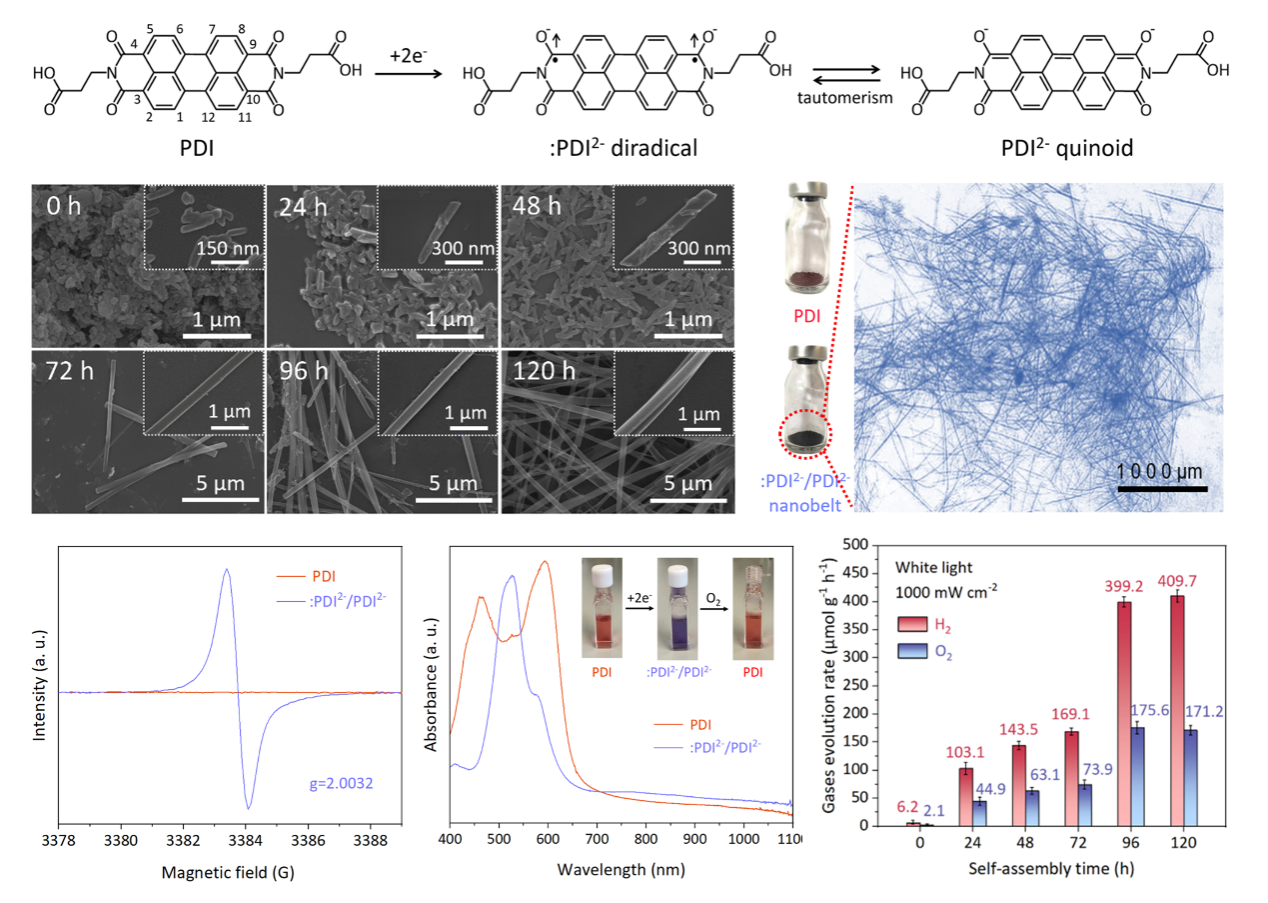Recently, the latest research paper Solar overall water-splitting by a spin-hybrid all-organic semiconductor was published online in Nature Communications in collaboration with Research Center of Fluid Machinery Engineering Technology and the Green Chemistry and Chemical Engineering Innovation Team of the School of Chemistry and Chemical Engineering of Jiangsu University (JSU). JSU is the first completion unit, doctoral student Lin Xinyu is the first author,Researcher Yuan Shouqi and Prof. Yan Yan of JSU and Prof. Ma Wanhong of the Institute of Chemistry of the Chinese Academy of Sciences are the corresponding authors.

Photocatalytic decomposition of water to produce hydrogen is a green and sustainable solar energy conversion strategy. Unlike inorganic semiconductor counterparts, using low-cost all-organic photocatalytic materials for solar-driven hydrogen production via complete water splitting poses significant challenges. This difficulty primarily stems from two key factors. First, traditional organic photocatalysts struggle to effectively utilize photon energies across the entire spectrum from 420nm to 1000nm during the S0 → S1 excitation process, adhering to Kasha's rule. Second, the common covalent C-H-X surfaces typically exhibit thermodynamic and kinetic inertness towards the hydrogen evolution reaction (HER).
Researchers have transformed perylene diimide (PDI) into an all-organic photocatalyst capable of fully splitting water under simulated sunlight. By synthesizing radical and quinoid isomers (:PDI2- and PDI2-) of PDI through self-assembly, they induced electron spin coupling between adjacent radical molecules in the semiconductor catalyst. This process triggers a unique triplet fusion upconversion, generating an excited S1 state capable of interacting with water molecules. Self-assembled radical-quinoid hybrid molecules (:PDI2-/PDI2-) nanoribbons generate long-lived triplet excitons through spin coupling during photoexcitation. Under AM 1.5G simulated sunlight, these molecules efficiently split water into hydrogen and oxygen, achieving an average apparent quantum yield (AQY) of 1.5% in the wavelength range of 450nm to 850nm and a solar-to-hydrogen conversion efficiency (STH) of 0.0806%. This study represents the first all-organic, metal-free photocatalytic system for complete water splitting. The organic spin-hybrid structure paves the way for designing a new class of light-responsive organic semiconductors for applications in photocatalysis, solar cells, sensors, and luminescent materials.

